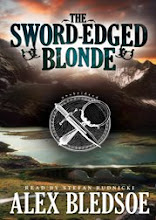
In anticipation of Halloween, and to get in the mood for my upcoming gig as a judge at the
Madison Horror Festival, I thought I'd talk about my favorite horror films, why I like them so much and what I like (and don't) about horror films in general.
My favorite horror film remains George A. Romero's original 1979
Dawn of the Dead. The reasons are many, but here are three:
1) It captures the true quality of a nightmare. Zombies shambling through a brightly-lit shopping mall could easily be one of those dreams where the commonplace turns, with no warning or explanation, horrifying.
2) Time has only made the film's commentary on our consumer culture more prescient and biting. Zombies pawing at displays of things they desperately want but can't possibly use could be a metaphor for everything from the subprime lending debacle to Wal-Mart's strangling of small businesses.
3) It has a
pie fight.The second tier is made up of films that have shown a consistent ability to terrify at a truly visceral level. First among equals is
The Exorcist, after a quarter-century still a film many people refuse to see. It does everything current horror films avoid: takes its time to build character, crafts a realistic setting for its horrors, and then, when it's got you good and hooked, lets fly without restraint. All those PG-13 "horror" films pale next to its relentless visceral and intellectual onslaught.
Joining Friedkin's classic is John Carpenter's masterpiece
The Thing. Halloween might be a more traditional choice, and it's certainly a worthy film. But
The Thing wins due to its intensity, its effects that show more imagination and skill than anything rendered on a computer, its refusal to suck up to the audience, and an ending that dares to leave the monster, the characters and the viewer uncertain who goes there.
Next to
The Thing is another Carpenter jewel,
In the Mouth of Madness. Perhaps my avocation as a writer predisposes me to like this one, but the idea that a novelist with Stephen King-like success could alter reality through the combined will of his fans is just too juicy. It's also told as a private-eye story, one of my favorite genres, and follows its premise to its logical conclusion.
The original version of
The Wicker Man is a one-of-a-kinder: a horror film for sure, but one with musical numbers and without a single suspenseful scene set at night. Still, when Scottish policeman Edward Woodward realizes his fate at the end, horror takes the day.
Madison Horror Film Festival guest of honor Stuart Gordon's
Re-Animator might not be true HP Lovecraft, but it has both the wit and the balls to show us extremes never before (or since) put onscreen. With a star-making turn by Jeffrey Combs and a level of gore as unrestrained as it is absurb, it created the sub-genre of horror-comedy that manages to serve both masters.
The most recent film to make the list is
Session 9, in which an overworked asbestos crew cleans up an abandoned mental hospital. Using little besides filmmaking skill and a supremely awesome location, this low-budget shot-on-video flick shows that imagination and conviction are really the only things needed to make a horror film work (and does
The Blair Witch Project one better by actually making sense).
There are some big names missing from this list, but there are reasons for that. I admire Wes Craven's massively fertile imagination, but his sadistic streak (he lingers on pain, not horror) turns me off. Guillermo del Toro's horror work is uniformly brilliant (I even like
Mimic), but somehow they don't
feel like horror films, more like dark fairy tales.
And if I thought Craven was sadistic, it's nothing compared to the whole torture-porn genre: horror films should be about more than merely watching people suffer. Likewise, the YARM syndrome (Yet Another ReMake) does little but line the pockets of people who have nothing but contempt for the horror audience (
Dawn of the Dead and
The Wicker Man have both endured pointless remakes, and
The Thing is in the pipeline.*)
And I used to love Dario Argento; but
Mother of Tears, the long-delayed conclusion to his Three Mothers trilogy (with
Suspiria and
Inferno), was so godawful and worse, so insulting to the fans that had clamored for it, that it left a sour taste that spread even to his monumental early work. I recognize this as a personal response, and make no pretense to objectivity. I simply know that whenever I see his name now, I think not of the brilliant color schemes of
Suspiria or technical wizardry of
Tenebre, but of Asia Argento literally crawling through shit, laughing hysterically.
So that's an overview of my take on horror film, which I'll be bringing (as well as a fanboy's glee at getting to meet Stuart Gordon) to the Madison Horror Film Festival the weekend of October 3-4. Leave a comment here before the end of the festival and you'll automatically be entered for a chance to win a DVD of
Blacula, a movie featured in my vampire novel
Blood Groove (and heck, I'll throw in a signed copy of the book as well).
*I know, Carpenter's
The Thing is technically a remake, but it's actually a much truer adaptation of the source material. That's a whole different topic for a whole other post.






















